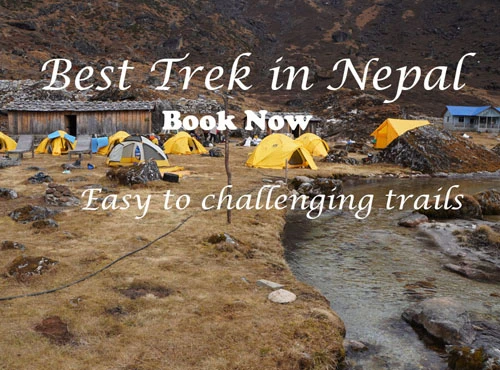Preparing for a Peak climbing in Nepal requires careful planning and packing of essential gear. Here's a checklist to help you ensure you have the necessary equipment for a successful climb:
Gear checklist for Peak Climbing in Nepal
Table of Contents
Clothing
- Base Layers: Moisture-wicking long-sleeved tops and bottoms to control the conditions adjacent to the skin.
- Mid Layers: Fleece or thick wool and pants to retain heat by trapping air. It helps in heat absorption while also being breathable to prevent suffocation and sweating when worn in place of an outer or shell layer. If three layering is done, then mid layer also works as an insulating layer.
- Insulating Layers: Lightweight down or synthetic jacket as it is thin, highly compressible, and provides additional loft and warmth. If the weather is dry, you can wear your insulated layer as an outer layer to keep warm.
- Outer Layers: Waterproof and windproof jacket and pants. The main purpose of outer layer is to protect from the harsh weather condition. There are two types of outer shells: hard and soft. While a soft shell may be water-resistant but not waterproof, it will be more flexible and breathable. But it is not windproof. Although less breathable, a hard shell is both windproof and waterproof. One or the other may be more suitable, depending on the kinds of weather. There is no substitute for a waterproof hard shell if encountered with rainy conditions. The best outer shell has taped seams, watertight zippers, many layers, and fabrics that are waterproof but still is breathable.
- Trekking Pants: Lightweight and quick-drying
- Insulated Gloves and Waterproof Gloves
- Warm Hat and Sun Hat
- Gaiters
- Hiking Socks and Liner Socks
Climbing Equipment
Climbing Helmet | It is used for safety of head. | Individual |
Climbing Harness | It is used for climbing and safety. It is also used for connecting ropes. | Individual |
Crampons | It is used for walking in snow and glacier. | Individual (Ensure they fit your boots properly)
|
Carabiners | It is used for connecting ropes and safety purpose. | Individual |
Auxiliary Cord | It is safety cord and used for emergency rescue purpose. | Individual |
Ascender | It is used for ascending in fixed line. | Individual |
ATC guide | It is used for belaying. | Individual |
Ropes | Dynamic rope: It is used for glacier traverse and lead climbing. Static rope: It is used for making fixed line. | Group
Individual |
Climbing boot | It is used till base camp. | Sturdy, insulated, and compatible with crampons |
Trekking sandal | It can be used below base camp after reaching the hotel / lodge / camp. |
|
Navigation and Communication
Map & Compass | It is used for finding the direction. |
Clinometer | It helps in calculating distance in map. |
Altimeter watch | It helps to know the altitude of the place. |
Smart Phone | Useful for communication and navigation. |
Satellite phone | For communicating. |
GPS | For tracking the location. |
Wands | Wands are a low-tech navigation solution. Made from bamboo sticks and colorful flagging. |
Personal care / Others
Backpack | Large enough to carry all your gear (around 50-60 liters) |
Daypack | Smaller pack for day trips and summit pushes |
Sunscreen | With SPF, depend on altitude |
Sunglasses | UV protection and suitable for snowy conditions |
Lip Balm | With SPF and moisturizing properties |
Toiletries | Toothbrush, toothpaste, soap, hand wash, sanitizer, toilet paper, wet & dry tissues |
First aid kit | Your regular medicine or if you have allergies to any. |
Head light | Depend or our trip |
Swiss knife | Multitool for outdoor |
Water bottle | Its size and shape are selected based on our plan, must be BP free. |
Thermos | Its size and shape are selected based on our plan |
Extra batteries | Lithium battery for high altitude |
Extra food | Energy bars, biscuits and etc. |
Charger | Solar power supply |




